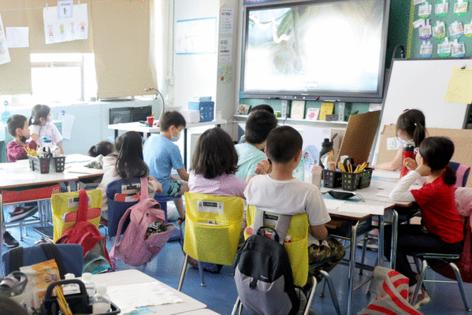Advocates urge NYC schools request pause on class-size caps before Mamdani takes office
Published in News & Features
NEW YORK — Education advocates made a last-ditch effort Thursday to persuade New York City officials to request a delay of the state’s class-size law before Mayor-elect Zohran Mamdani takes office.
The 2022 law caps class sizes between 20 and 25 students, depending on their grade level. The city has two more school years to reach full compliance, but only until Saturday to recommend the state grant a pause.
The coalition behind the public plea — Educators 4 Excellence, Robin Hood, and EdTrust-New York — warned the last stretch of the phase-in could divert resources from high-need schools and strain the education system’s budget, particularly amid federal funding threats from President Trump and promises of free child care under a Mamdani administration.
“Mayor-elect Mamdani needs financial flexibility to build on our school system’s progress, not constraints that work against equity,” Richard Buery, CEO of Robin Hood, said during a virtual press conference.
“We have a one-time opportunity to hit a temporary pause button — the only time allowed by law,” added Buery, a former deputy mayor under Mayor Bill de Blasio who oversaw the universal pre-kindergarten initiative. “It gives the new mayor a chance to get his hands on this puzzle. We should not waste it.”
Spokespeople for Mayor Adams and NYC public schools did not say if such a request is under consideration, with just days left until a Saturday deadline as part of a legally mandated financial impact statement.
Nor is it clear if Mamdani would support such a move. The mayor-elect has been a vocal supporter of the law, promising on the campaign trail to quickly hire thousands more teachers to comply with it. His representative did not immediately return a request for comment.
“This is urgent not only to fulfill the class-size law,” Mamdani said in the final weeks before Election Day. “But this is also an urgent part of reckoning with the state of our education system today — a system where we have proficiency levels of just 57% for math, 56% for reading.”
“We cannot disentangle these statistics from the fact that we have been refusing to hire the additional teachers that would be critical to transforming what is possible within our schools.”
Evan Stone, CEO of Educators for Excellence, insisted that if a pause is approved, the mayor-elect could still move forward as planned. Alternatively, Mamdani could push for changes to the law, such as reducing class sizes in low-income neighborhoods or elementary schools, and using the leftover funds to back his promised child care expansion.
“I don’t think that anybody on this call would tell you that we shouldn’t reduce class size,” Stone said. “Is that the best use of resources in this moment of constraint and risk, particularly coming from the federal level?”
EdTrust-New York put it more bluntly. In an analysis of class-size funding allocated to principals this year, the organization found schools serving the most Black, Hispanic and low-income students received smaller allocations than those serving the fewest.
“The federal government has got their target on us, they’re looking at us, they’re cutting programs to magnet schools,” said Arlen Benjamin-Gomez, the group’s executive director. “So, it’s really a time to assess what’s the best use of our dollars right now, and this is not the best use of our dollars.”
State Sen. John Liu, chairperson of the New York City Education Committee and the class-size law sponsor, said it’s the city’s legal obligation to lower class sizes, and questioned whether Nov. 15 has to be a hard deadline to discuss flexibility in the law.
“It’s somewhat hard to pause something that was never started in the first place,” said Liu, who endorsed Mamdani before the Democratic primary. “To the extent that the timeline needs to be modified, let’s talk about it. But we cannot pause something without any kind of plan in place.”
The city has provided funding to hire more teachers and converted some school spaces into classrooms, but it has largely avoided the most costly or disruptive proposals to lower class sizes, such as capping enrollment and finding or constructing new school buildings. The law also allows for some exemptions, and eight of them have already been approved for specialized high schools, including Mamdani’s alma mater, Bronx Science, and Stuyvesant High School.
“There is no reason to pause,” said Michael Mulgrew, president of the United Federation of Teachers union, which also endorsed Mamdani and pushed for the law’s passage. “This initiative is working. We owe it to our students and educators to stay the course.”
©2025 New York Daily News. Visit at nydailynews.com. Distributed by Tribune Content Agency, LLC.







Comments